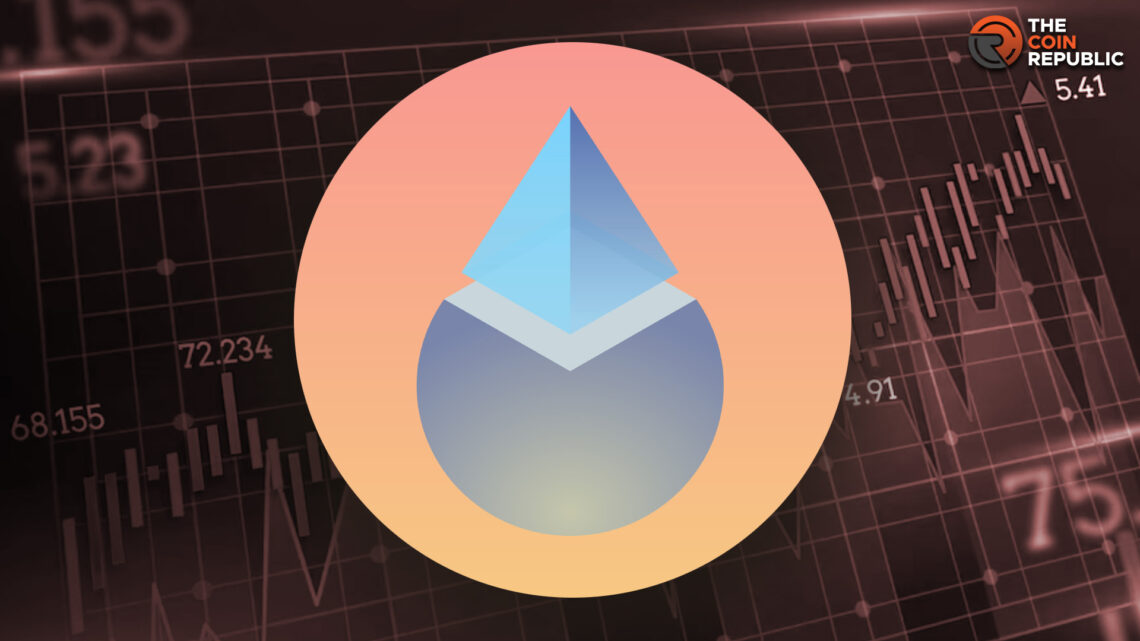- 1 Lido is a type of liquid staking protocol that addresses the limitations of PoS staking systems.
- 2 Lido protocol alleviates the need of users to lock their assets on PoS blockchains for unknowingly long periods.
- 3 Lido DAO maintains the governance in the protocol to ensure stability and transparency.
In the present era of decentralized finance (DeFI), investors are inclined to use their capital in a profitable way. Roughly millions of cryptocurrency users stake their capital on the Proof-of-Stake (PoS) model-based blockchains (e.g., Ethereum) to earn rewards.
However, while staking on these networks, users stumble upon certain challenges such as large capital requirements, technical complexities for a validator setup, lost liquidity and accessibility of the locked assets for extended periods. Lido finance, a popular liquid staking solution, serves as an alternative to the traditional PoS staking. This protocol enhances the liquidity of the staked assets and makes them more immobile and accessible to investors.
Brief Introduction to Lido Protocol
Lido is a renowned platform in the crypto space that provides liquid staking services to various blockchain networks. Launched in late 2020, this platform allows its users to to stake their PoS cryptocurrencies without locking them away. While providing liquidity to the staked assets, Lido also lets investors participate in different on-chain activities of their choice, e.g., lending, yield farming.
The protocol most notably provides a staking infrastructure to Ethereum, the world’s largest PoS blockchain network. Whilst using the Lido protocol, users can stake any amount of Ether (ETH) in exchange for a staking derivative token, stETH (ERC-20 compatible). The staked ETH is then delegated by Lido finance to the professional validator nodes for validating transactions.
This tokenized version of ETH is received on a 1:1 ratio basis representing the staked ETH on Ethereum mainnet. Moreover, stETH tokens are minted when users stake their capital into Lido protocol’s staking pool smart contract and burned as soon as the ETH tokens are unstaked.
It should be noted stETH can be utilized by investors like regular ETH to earn yields and lend rewards. As the solution generates rewards on the staked ETH, the amount is added to the stETH token’s balance, which is updated every day.
Lido Finance enables investors with less than 32 ETH tokens to participate in staking. This is deemed as a major advantage since becoming a validator on Ethereum requires users to invest a minimum, yet, steep amount of 32 ETH (roughly $60,000). At the time of writing, Lido supports liquid staking of coins of four other blockchains, namely, Solana, Moonbeam, Moonriver, and Terra Classic.
How is Governance Regulated in Lido DAO?
The smooth operation of Lido is facilitated by its decentralized autonomous organization (DAO). Lido DAO is a robust framework responsible for maintaining a decentralized and transparent architecture of governance in the protocol. It manages a set of liquid staking protocols by deciding on some key parameters of Lido solution such as setting fees on staking rewards, assigning node operators, and protocol upgrades.
The DAO members use the protocol’s native cryptocurrency, LDO token, to distribute governance rights in the Lido ecosystem. This token bestows its holders with a privilege to vote and participate in the decision-making process of the Lido protocol. Lido DAO works on a token-weighted voting system, meaning if a holder has more LDO tokens, they gain more voting power.
The strategic decisions and proposals significantly affecting Lido protocol’s ecosystem are voted for on-chain. Before deciding on the fate of a proposal, Lido DAO governance process goes through multiple steps to ensure it is properly communicated with the vast community. The regular governance process follows the below-mentioned steps:
- Every potential proposal and idea is posted on Lido’s Research forum to receive feedback from the community. A usual timeframe of a week from the initial posted date is given to let the members object or decide to go forward with the proposal. If the community reacts positively, the proposal can move onto the next step.
- Snapshot Voting is the next major step of the governance process. This gasless voting is a chance for the Lido community to show their support or objection to the proposal before it is subjected to an on-chain voting. The snapshot votings are a week-long programme which ends at least 24 hours before the on-chain voting execution starts.
The decision-making power of a snapshot vote is linearly proportional to the LDO token balance a voter has, i.e., more LDO tokens corresponds to higher voting power. For a proposal to receive an affirmative snapshot vote, a minimum quorum (>5% of the total LDO token supply) is essentially required.
- The final step of approving the protocol’s upgrade is achieved by an on-chain voting process on AragonOS. The detailed DAO framework supplied by Aragon is used by Lido to execute voting, fund transfers, and update of smart contracts.
For the approval of routine proposals (not managed by Aragon), Lido DAO uses a governance tool, Easy Track. This application assists Lido DAO in managing routine and consensual governance proposals. It also reduces voter fatigue and on-chain gas costs, while imparting more autonomy to the sub-committees and nodes within the Lido organization.
Lido Finance is the biggest liquid staking protocol allowing users to stake their assets without the drawback of locking them. The solution is striving towards its goal to make the capital of users more liquid, movable, and accessible. With a robust DAO framework working rigorously for maintaining the decentralization aspect, Lido continues to achieve a dominant edge in the DeFi space.

With a background in journalism, Ritika Sharma has worked with many reputed media firms focusing on general news such as politics and crime. She joined The Coin Republic as a reporter for crypto, and found a great passion for cryptocurrency, Web3, NFTs and other digital assets. She spends a lot of time researching and delving deeper into these concepts around the clock, and is a strong advocate for women in STEM.


 Home
Home News
News









